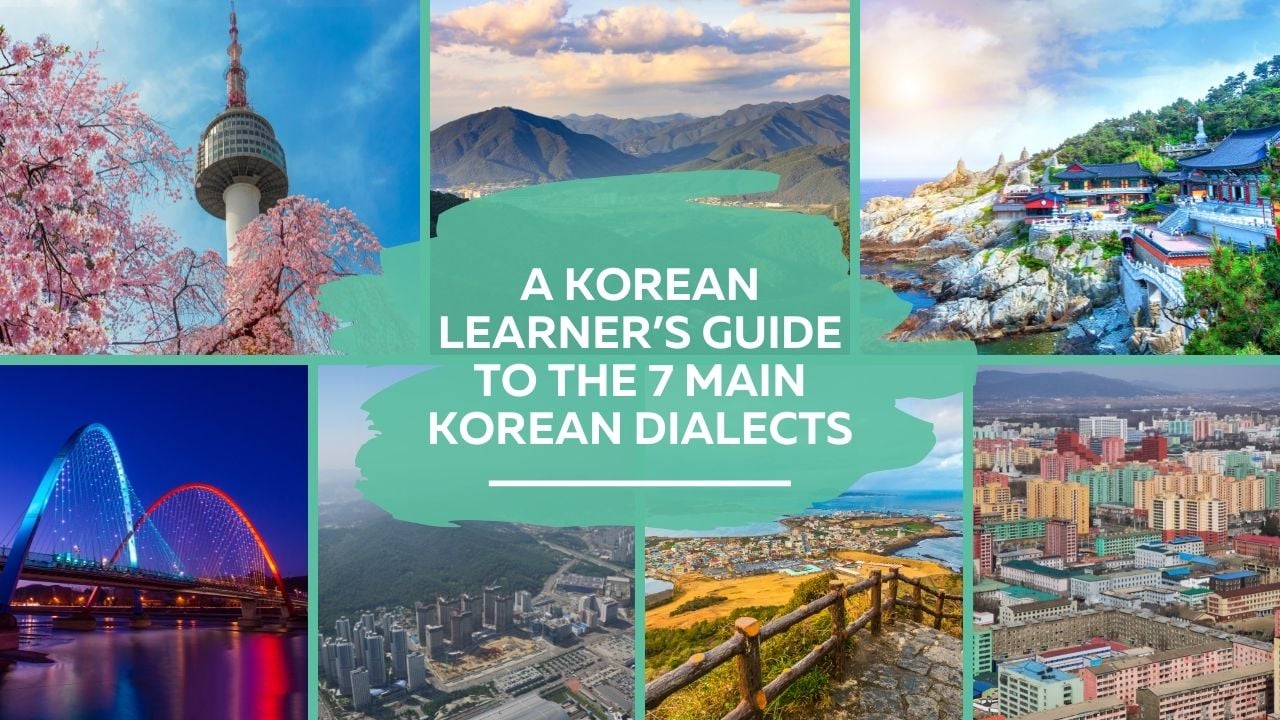
Korean dialects are some of the most interesting aspects of learning Korean.
Put simply, they're different versions of the same language, and people speaking different dialects of a language can usually understand each other.
In English, probably the most recognisable example is British and American English. Think about how you could easily speak with an American English speaker, but there would be some differences. Like “sidewalk” vs “pavement”, or “trunk” vs “boot”.
On the written level there are spelling changes – “color” vs “colour” – and occasionally there are grammatical differences too. Americans might say “on accident” where British speakers would say “by accident”. The same words might also be pronounced differently.
All of these differences together make up a dialect. Dialects are not to be confused with accents which are probably more well known – think Liverpool accent, Cockney accent, California accent – these are only about the pronunciation of words.
Korean has dialects too. They are called 사투리 (dialect) or 방언 (regional dialect). In this post, you'll discover the most well-known ones as well as finding out about how they're different from one another.
At the end, you'll also discover how North and South Korea have developed distinct dialects since the end of the Korean war.
Here’s what this post will cover:
- The standard dialect (Gyeongi-do) – 경기도 표준어
- The Gangwon-do dialect – 강원도 방언
- The Chungcheong-do dialect – 충청도 방언
- The Jeolla-do dialect – 전라도 방언
- The Gyeongsang-do dialect – 경상도 방언
- The Jeju-do dialect – 제주도 방언
- The North Korean dialect – 문화어
So let’s get started!
By the way, if you want to learn Korean fast and have fun while doing it, my top recommendation is Korean Uncovered which teaches you through my fun, unique and effective StoryLearning® method.
If you’re ready to get started, click here for a 7-day FREE trial.
#1 The Standard Dialect (Gyeongi-do) – 경기도 표준어
If you have any familiarity with Korean, this is most likely what you think of. It’s what you’ll hear in most movies and TV shows. It’s what’s written in textbooks and what you’ll hear in listening exercises too.
This is also the dialect spoken in the capital city, Seoul. Seoul isn’t technically part of Gyeongi-do, it’s its own “Special City” district. But given that this district is located within Gyeongi-do, it can easily be associated with it.
Speakers of this dialect are regarded as having quite a mellow or smooth intonation. So don’t expect any changes in pitch when listening to speakers of this dialect.
Although this is considered a standard dialect, it does have a notable pronunciation quirk. At the end of certain words, the 아 vowel becomes 어. Two examples you would hear often in conversation in Seoul and the surrounding areas:
- 알아 – 알어
- 아파 – 아퍼
These wouldn’t usually be written, only spoken. Some people might write this in texts, but not any kind of formal writing.
#2 The Gangwon-do Dialect – 강원도 방언
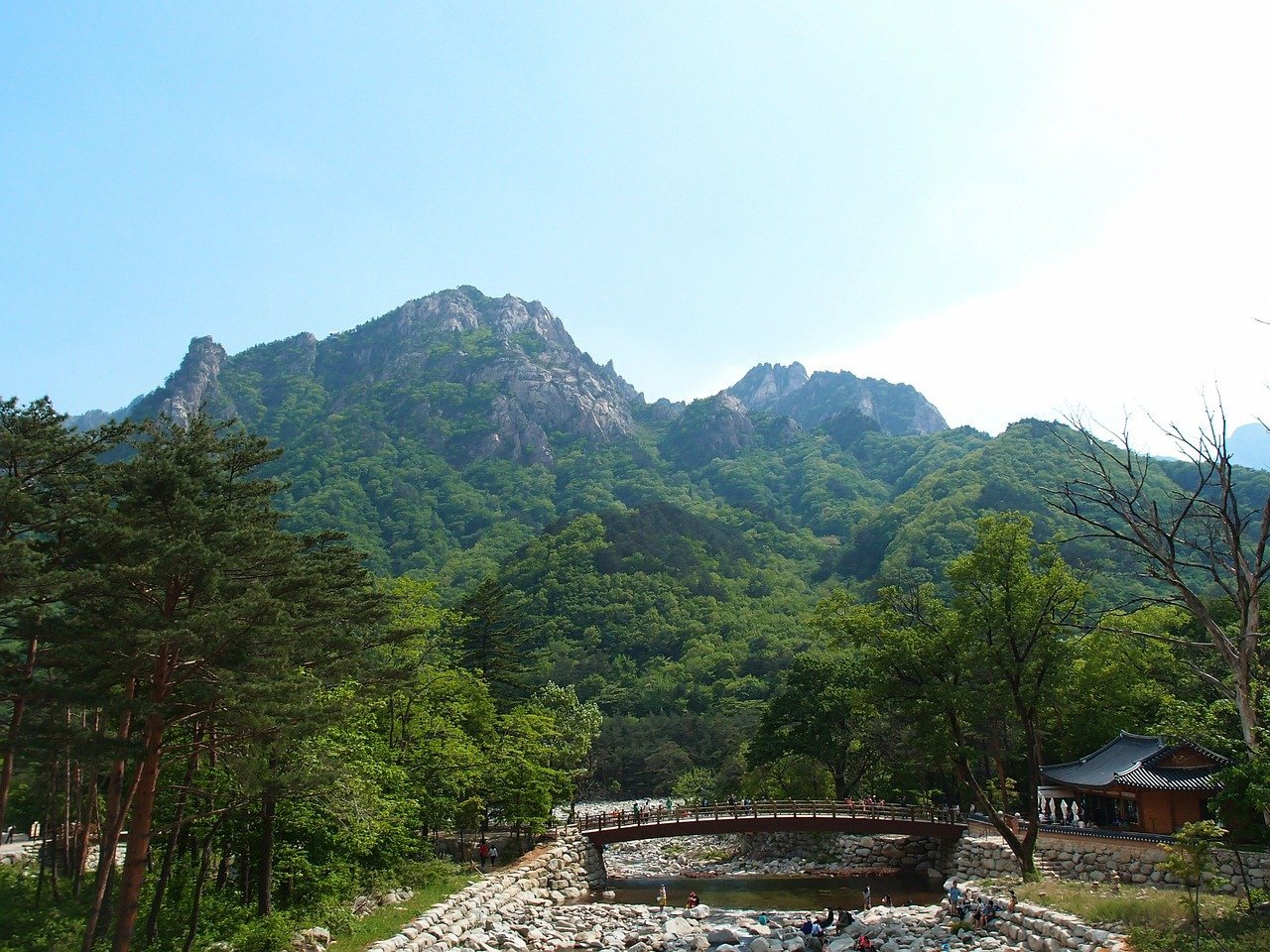
When people think of Gangwon-do, they think of farms and the countryside. This dialect isn’t hugely different from the standard dialect – which makes sense when you consider it is fairly close to Seoul. People living closer to Seoul naturally sound similar to the standard dialect, while people farther west sound more distinct.
There are a few things you will notice when listening to the Gangwon-do Dialect. The very common verb ending 에요 (to be) is replaced with 래요.
- 주스에요 – 주스래요 – (It’s juice)
Another notable change is that the ㅆ consonant is pronounced more like ㅅ:
- 쌀 -살 (rice)
- 쓰레기 – 스레기 (trash)
Lastly, there are quite a few different words that even native speakers might not know upon hearing them for the first time. Let’s have a look at a few:
- 화장실 – 정낭 (toilet)
- 음식 – 음석 (food)
- 남자 – 머스미 (man)
- 옥수수 – 옥시기 (corn)
Overall, this one isn’t too different. But there are a few word changes that might catch out even a native speaker!
#3 The Chungcheong-do Dialect – 충청도 방언

This next dialect is described by native speakers as seeming slower. It is another largely rural area of the country, although this area does include the large city Daejeon.
Even in the past, in the Northern Chungcheong area, the differences with the standard dialect were not that pronounced. These days in the cities and the northern areas, you would be unlikely to hear any difference.
One very noteworthy change with this dialect is the use of 유 to replace 요:
- 맞아요 – 맞아유 – (That’s right)
One notable change with the Chungcheong-do dialect is that 세요 is shorted to 슈. This means that people in Chungcheong-do have a memorable way of saying hello on the phone:
- 여보세요 – 여보슈? – (Hello (when answering the phone))
The consonants ㄱ,ㄷ, and ㅂ are often pronounced closer to ㄲ, ㄸ, and ㅃ. Truthfully though, non-native speakers of Korean often struggle to distinguish between these anyway, so you are unlikely to notice this.
One quirk that you would likely notice is the use of 겨 in when asking questions:
- 뭐하는 거야? – 뭐 하는 겨? – (What are you doing?)
Again this is another dialect that is unlikely to cause major issues for you as an learner when having simple conversations. Especially as the above changes also come with a slightly slower pace of speaking than the standard dialect.
#4 The Jeolla-do Dialect – 전라도 방언
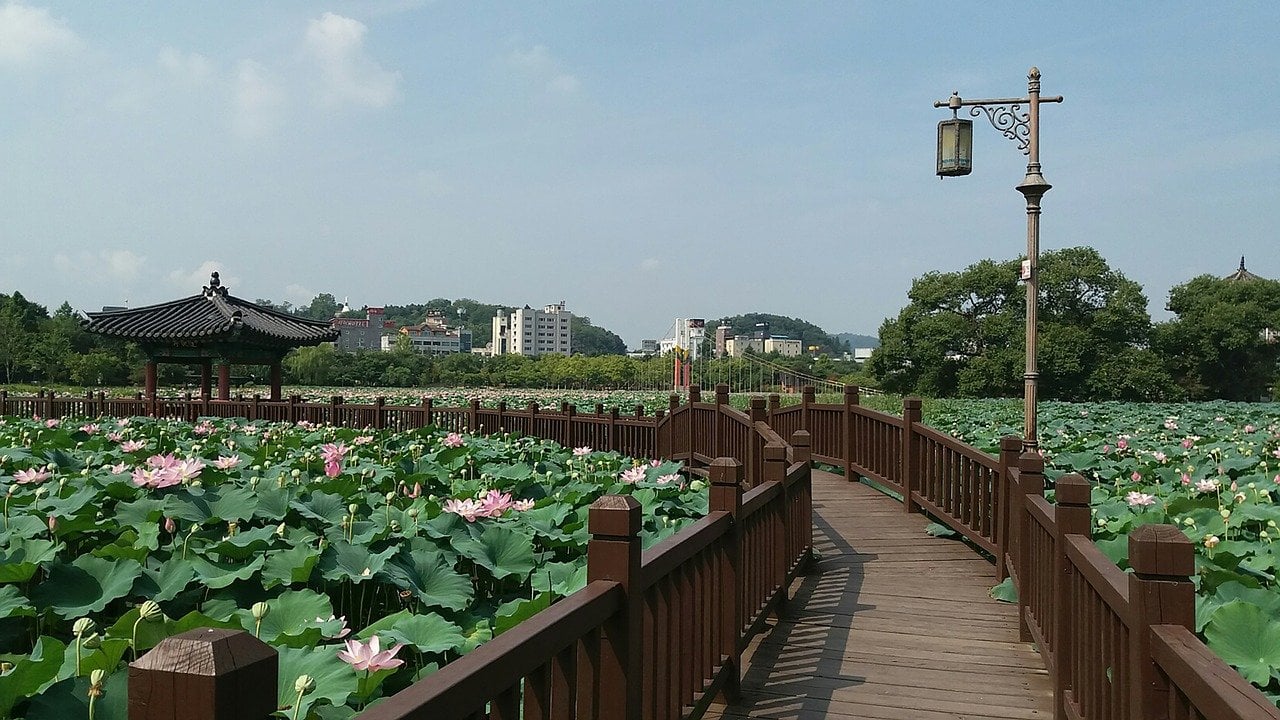
This area is again largely countryside, although it includes the city Gwangju. As we move further away from Seoul, so too do the dialects become a little more different.
The general impression among native speakers of Korean is that this dialect is marked by fast speech and distinct accents.
A big difference is seen when discussing the cause of events or actions.
The common verb ending 니까 is replaced with 응게:
- 운동 했으니까 – 운동 했승게 – (because I did exercise)
A similar change happens when discussing speech. 라고/다고 are replaced with 당게
- 언니가 뭐라고 했어? – 언니가 뭐라 했당게 ? – (What did my sister say?)
Similar to how the Chungcheong dialect repaces 세요 with 슈, this dialect makes a similar change, 세요 – 쇼
- 안녕하세요 – 안녕하쇼 (hello)
Many of the vowel sounds in this area may sound strange, even to someone only somewhat familiar with Korean. One of the simpler changes is that vowel sounds formed from two vowels often omit the first of those sounds.
- 광주 – 강주 – (Gwangju)
The opposite also happens, and sounds are sometimes more complex than they are in the standard dialect:
- 고기 – 괴기 – (meat)
- 토끼 – 퇴끼 – (rabbit)
This dialect has a few distinct words. A very commonly heard word is 거시다, which is similar to “thingy” in English, to use when unable to remember a correct word.
Expressions of shock are different in the Jeolla dialect too:
- 엄마! – 왐마! – (oh!)
With the faster speech and accents, this one might be a little more difficult for a new learner of Korean to understand. But don’t be afraid to ask for people to repeat things and you should be fine!
#5 The Gyeongsang-do Dialect – 경상도 방언

The Gyeongsang-do dialect is perhaps one of the more well-known dialects of Korean, as it includes Busan. You may even have heard this described as the Busan dialect.
Truthfully, however, this area also includes Daegu and Ulsan. A native speaker could likely identify if someone was from Busan or Daegu.
It is marked by shorter sentences and harsher intonation. Native Koreans describe this dialect as sounding direct or rude. Like someone is arguing, even when they aren’t.
One notable example of this sense of shorter sentences is a common question:
- 뭐라고 했어요? – 뭐라카노? – (What did you say?)
The pronunciation can also be described as lazier. This can be seen in particular when 어 vowels sometimes become 으 vowels:
- 어디 – 으디 – (where)
Similar to the Jeolla dialect – likely because of their proximity to each other – double vowels are often shortened to a single vowel during speech:
- 사과 – 사가 – (apple)
- 뭐 – 머/모 – (what)
This is another area of Korea in which the distinction between ㅆ and ㅅ is less pronounced, and so like the Gangwon-do dialect, 쌀 (rice) is pronounced more like 살.
One thing you might notice often is in casual speech. Instead of 야 you might hear 가
- 약속은 내일 아니야? – 약속은 내일 아이가? – (It’s tomorrow isn’t it?)
This last example is the kind of thing that can really trip up Korean learners because 아이가 also sounds like “child” and this sentence sounds really different from the standard dialect.
You’ll also see this confusing 아이가 ending used in place of 잖아, which is used when discussing information already known by both parties.
Additionally, the polite 세요 ending that we’ve seen change in other dialects changes here once again.
- 안녕하세요 – 안녕하이소 (Hello).
This last one is more common among older people now.
Overall, this dialect is probably the most distinct on the Korean mainland and could cause some issues for Korean learners. With that said, when talking with younger speakers in Busan it is unlikely you would have any issues.
#6 The Jeju-do Dialect – 제주도 방언
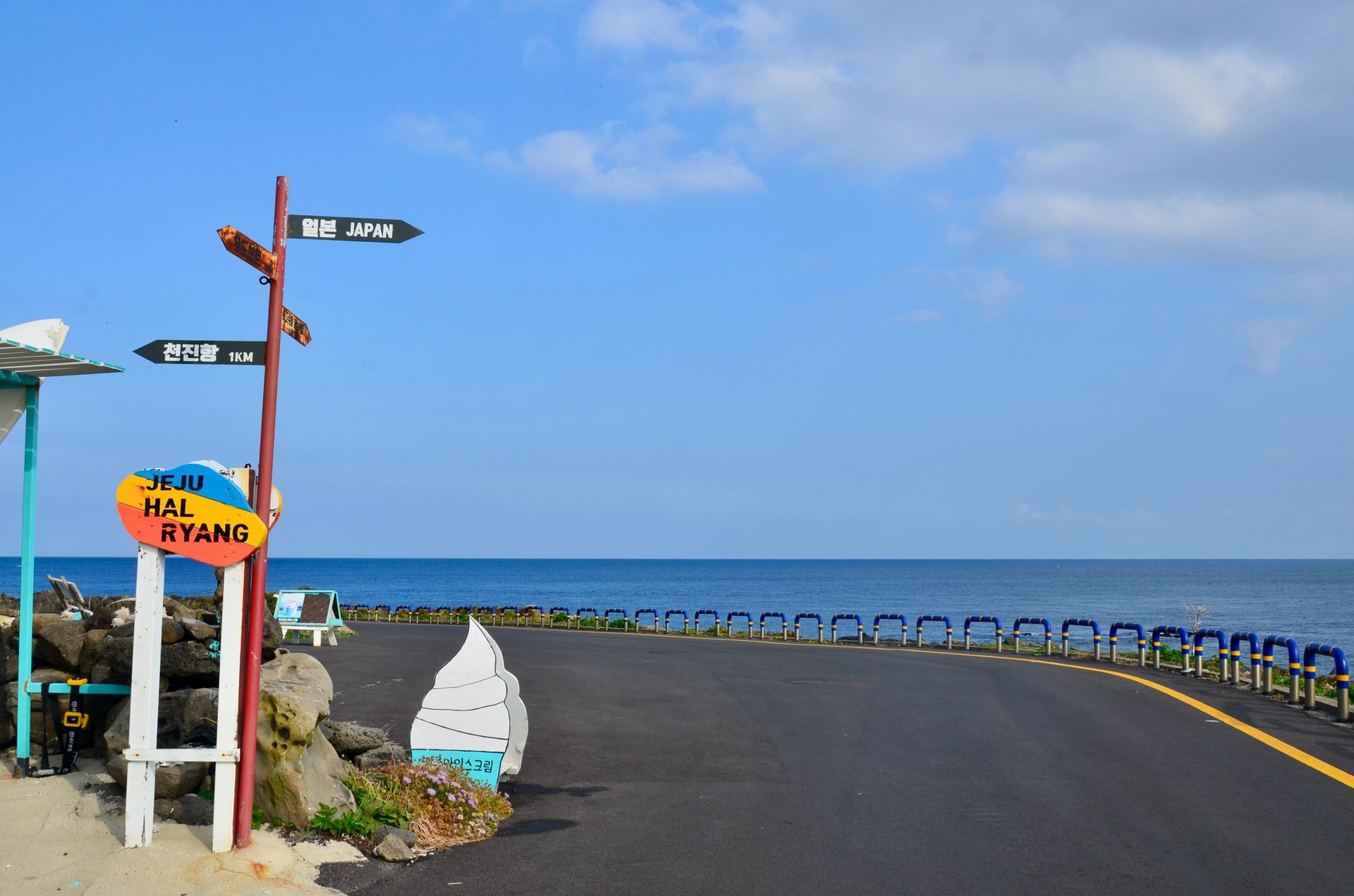
The Jeju dialect is really quite different from the standard dialect. It has been influenced by both Japanese and Mongolian, and even has its own vowel! Some people feel that it’s more like its own language.
These days, much like with some of the more difficult parts of the Gyeongsang-do dialect we already looked at, it’s mostly older people who use the more distinct parts of this dialect.
If you were speaking with younger Jeju inhabitants you might not encounter all of the elements we’ll discuss here.
Politeness is less important in the Jeju-do dialect, and so older speakers on Jeju might seem a little gruff or unfriendly.
Often, things will sound completely different in the Jeju dialect:
- 뭐라고 말하는 거야? – 뭐라 고람시? – (What are you talking about?)
Jeju Dialect Words
Actually, as I mentioned earlier, this is more like its own language with its own words. I'll list a few of the most notable ones, but there are too many to list them all.
- 이렇게 – 영 – (this way)
- 그렇게 – 경 – (that way)
- 왜 – 무사 – (why)
- 무엇 – 무신거 – (what)
- 엄마 – 어멍 – (mother)
- 아빠 – 아방 – (father)
- 아주 – 잘도 – (very)
Truthfully though, only the oldest people on Jeju Island will know these words, and they likely wouldn’t even use them when speaking with younger Koreans who wouldn’t know them anyway.
These are just something to listen out for if you’re around older Jeju residents.
Jeju Grammar
You may hear some slightly different grammar more often though. For example, the ending 마씀 after a verb or noun:
- 맛있어! – 맛이서마씀 – (It’s delicious!)
I mentioned the Japanese influence on Jeju dialect earlier, and it’s possible that this is one of those instances, coming from the Japanese -masu.
You might also hear the ending 멘 in questions.
- 뭐해요? – 뭐허멘? – (What are you doing?)
There are plenty of smaller differences too. For example, you can use 반갑습니다 (nice to meet you) as a way of saying hello on Jeju Island. You might also ask a friend where they’re going instead of saying hello!
Overall, this is the most distinct Korean dialect we’ve looked at so far. But in practice, you’re unlikely to see that much of it. You don’t need to learn any of this if you visit Jeju Island and wish to speak Korean.
#7 The North Korean Dialect – 문화어
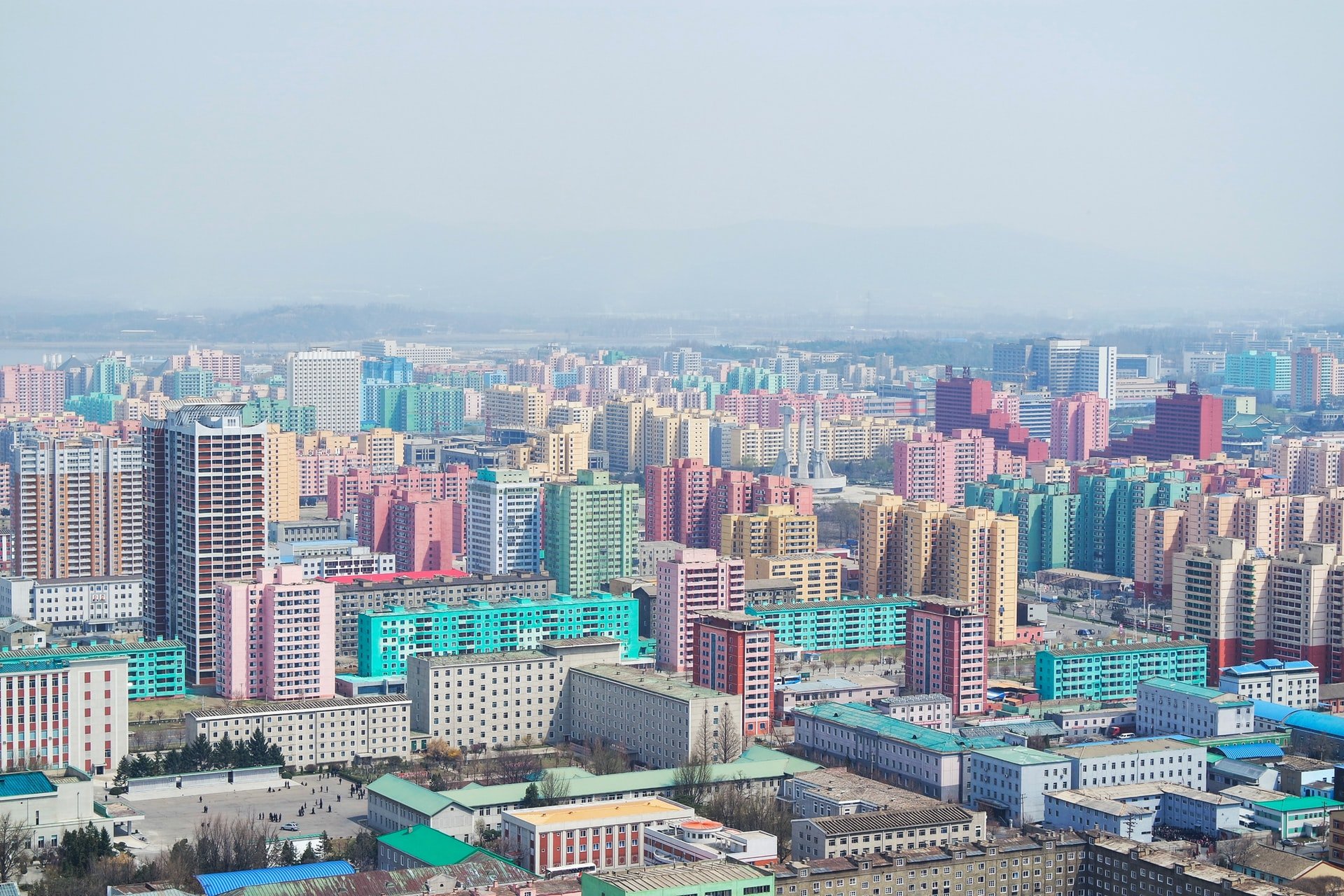
The North Korean and South Korean dialects are still very similar, having only diverged at the end of combat operations in the Korean war in 1953.
A North Korean and a South Korean could easily communicate even today. That’s because the standard north and south Korean dialects both originate largely from a 1936 document from the Korean Language society.
However, over time they’ve changed. The biggest and most notable difference is probably Konglish. You no doubt know about Konglish already.
South Korea has thousands of words that are simply the English word written using hangul. South Korean even sometimes makes up new words using English words, that we don’t have in English!
롱디 is a great example of this. It’s a contraction of long + distance and means a long-distance relationship.
Word Formation And Loan Words
This doesn’t happen in the North Korean dialect, and they create a new word in situations during which South Korea uses Konglish.
Here are some examples:
- 아이스 크림 (ice cream) – 얼음과자 (ice snack)
- 핸드폰 (hand phone) – 손전화 (hand phone)
Interestingly, while North Korean doesn’t use Konglish words, they do use loan words from Russian. This means that for a word such as “tractor”, North Korea has chosen a Russian loan word, and South Korea has chosen an English loan word.
It’s interesting because the loan words are similar but not identical:
- 트랙터 (tractor, English) – 뜨락또르 (traktor, Russian)
There are also phrases that have evolved to have different meanings over time in the two different dialects. One example is how to say “it’s okay“.
- 괜찮아 – 일 없다 (it’s okay)
This example is interesting because 일 없다 has become somewhat of an idiom in South Korean for “none of your business”. Definitely some potential for a misunderstanding here!
Pronunciation Differences
There are also some differences in pronunciation, most often related to how the different dialects now interpret Korean-Chinese symbols:
- 왜 – 외 (why)
- 연습 – 련습 (practice)
- 여자 – 녀자 (girl)
- 냉수 – 랭수 (cold water)
There are also a number of differences in how the two dialects are written, although we won’t cover those here as they don’t have much relevance to spoken Korean.
There are also some differences in vocabulary that may stem from dialectal differences between Pyeongyang and Seoul from before the Korean War.
Overall, at this point, the North Korean dialect is probably less distinct from the standard dialect than the Jeju dialect, but more distinct from the dialects on the mainland.
Korean Dialects And You
That’s everything you need to know about the main Korean dialects!
Reading through everything above, you might be feeling a little worried. But you shouldn’t be.
As a Korean learner, you don’t need to stress too much about learning this information off by heart. Memorizing all of this would likely benefit you in a pub quiz before it would benefit your ability to communicate in Korean day-to-day!
Your textbooks and Korean apps are likely already in the standard dialect, and that’s the only one you need to focus on. The standard dialect can be understood everywhere in Korea.
In any case, I really hope you enjoyed this insight into Korean dialects!

Olly Richards
Creator of the StoryLearning® Method
Olly Richards is a renowned polyglot and language learning expert with over 15 years of experience teaching millions through his innovative StoryLearning® method. He is the creator of StoryLearning, one of the world's largest language learning blogs with 500,000+ monthly readers.
Olly has authored 30+ language learning books and courses, including the bestselling "Short Stories" series published by Teach Yourself.
When not developing new teaching methods, Richards practices what he preaches—he speaks 8 languages fluently and continues learning new ones through his own methodology.









































